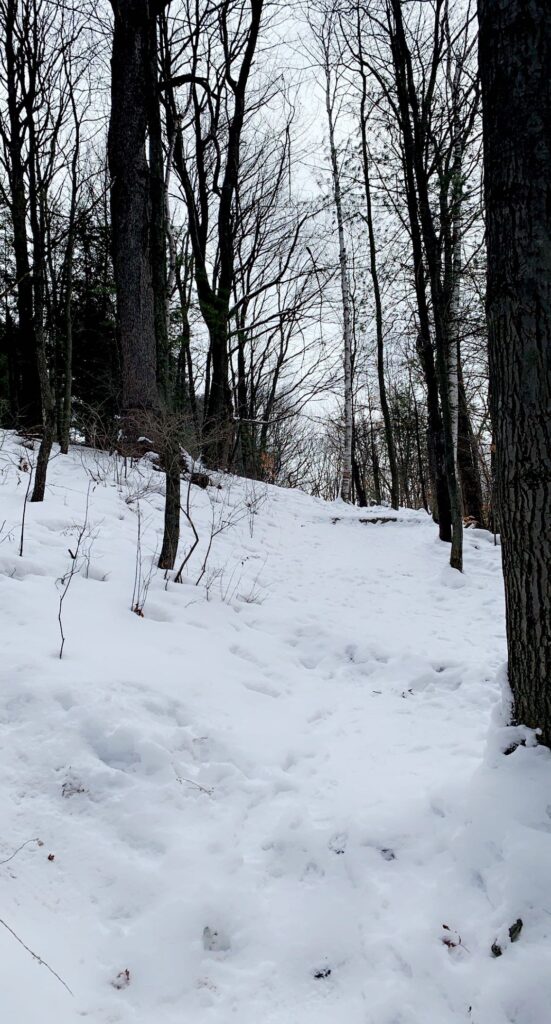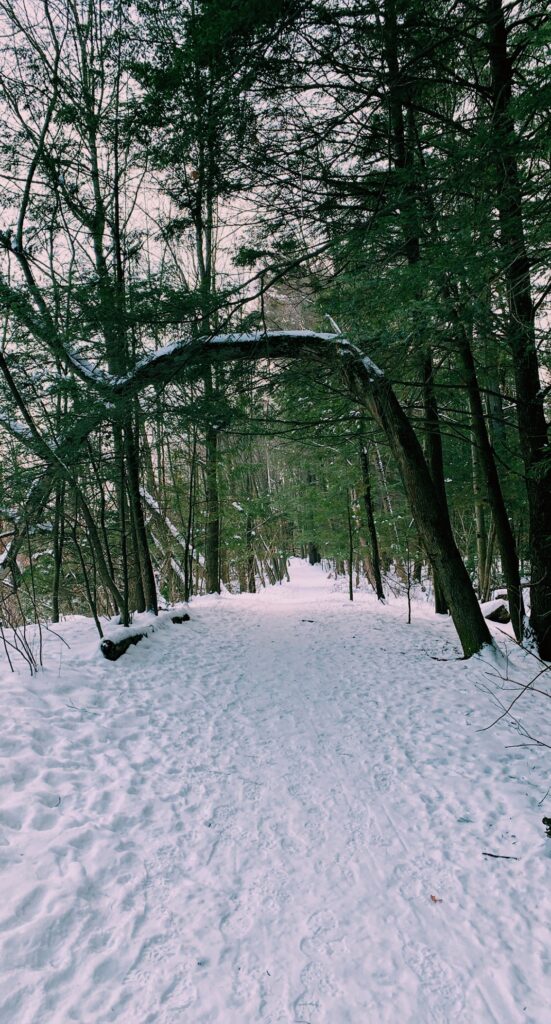
Phenology Update
Upon returning to campus for second semester, the appearance landscape was clearly different. Studying the phenological changes within Centennial Woods since the last blog post, the decrease in average daily temperature has impacted the flora and fauna.

As discussed in previous blog posts, temperature decrease resulting from changing seasons causes vegetation to become dormant. to conserve energy and nutrients essential to survival, plants will stop growing until milder weather returns. This was evident on my walk through Centennial, as seen in the pictures above and to the right.
Centennial Woods February 5, 2021
Finding evidence of animal life in the woods was slightly more difficult than in past blog posts. While walking through the woods, the trails were compacted from the flow of human traffic, so I was unable to find any animal tracks. However, I could hear birds chirping throughout the woods. Specifically, I heard a tapping sound, and saw a woodpecker which I have now been able to identify as a Pileated Woodpecker. Unlike some animal species that inhabit Centennial Woods, the Pileated Woodpecker is a non-migratory bird species that does not hibernate. Pileated Woodpeckers live together in pairs, and they are typically very territorial; however, during the winter they are known to tolerate floaters. This tolerance could be the birds conserving limited energy, which result from the lack of resources of the winter landscape provides.

